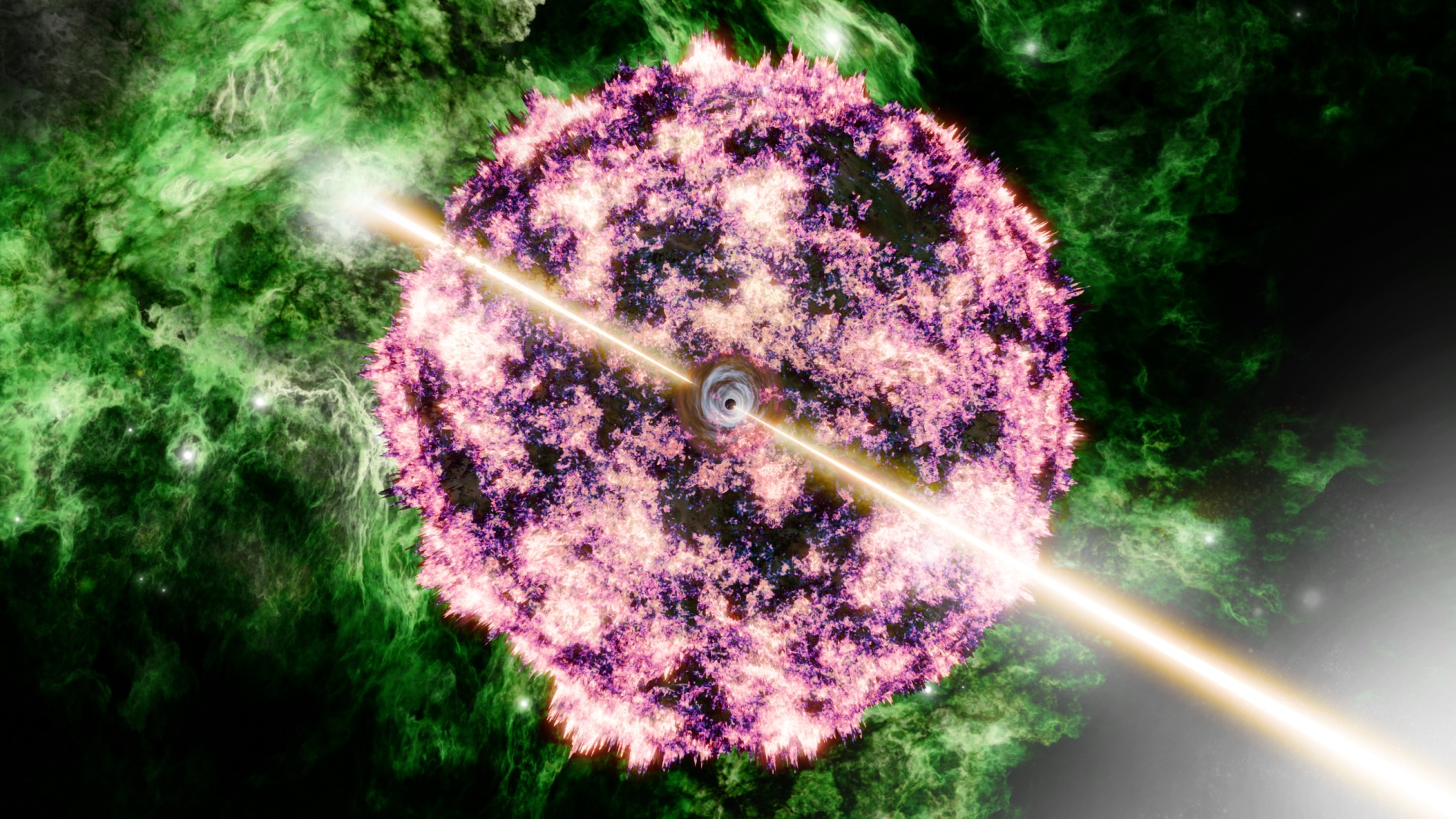In October 2022, the Gemini South telescope detected an extremely bright flash, which was nicknamed the “Brightest Of All Time”, or BOAT. After analyzing the event using the James Webb Space Telescope, the researchers determined that it was the result of a hypernova, a super-powerful explosion of a dead star. In the remnants of the explosion, scientists searched for heavy elements such as gold and platinum, but did not find them. The absence of heavy elements has greatly puzzled scientists, which leaves the question of the origin of these elements open. The results of the explosion studies were published in Nature Astronomy.

Void in the explosion
Gamma-ray bursts are divided into short and long bursts. Short ones are very fleeting and on average last a fraction of a second. Gamma-ray bursts lasting longer than two seconds are called long bursts. BOAT belongs to the latter category. But this record-breaking burst lasted an amazing 10 hours! A year after the burst, the scientific team determined that the BOAT was emitting gamma rays with an energy of up to 13 teraelectronvolts — the same energy as the Large Hadron Collider during its second launch.
The long period of illumination of the brightest flash allowed the researchers to carry out further analysis using James Webb and the NIRSpec, which helped to establish that the supernova itself was not a producer of heavy elements.
“This event is particularly exciting because some had hypothesized that a luminous gamma-ray burst like the B.O.A.T. could make a lot of heavy elements like gold and platinum. It is really striking that we didn’t see any evidence for these heavy elements” explains study co–author and astrophysicist from Harvard University, Ashley Villar.
Not the most powerful flash
Despite the impressive energy of the flash, the BOAT is not actually the largest explosion ever observed in space — that title belongs to AT2021lwx, a nearly 8 billion-year-old flash from a distant black hole and its surrounding gas cloud.
Astronomers will see even more explosions like this and those similar to BOAT when the next generation of observatories are available. One of these will soon be the Vera Rubin Observatory in the Chilean Atacama Desert, which will use a camera with a resolution of 3.2 billion pixels.
Earlier, we reported on how a strange feature was discovered in the brightest gamma-ray burst.
According to gizmodo.com
Follow us on Twitter to get the most interesting space news in time
https://twitter.com/ust_magazine


